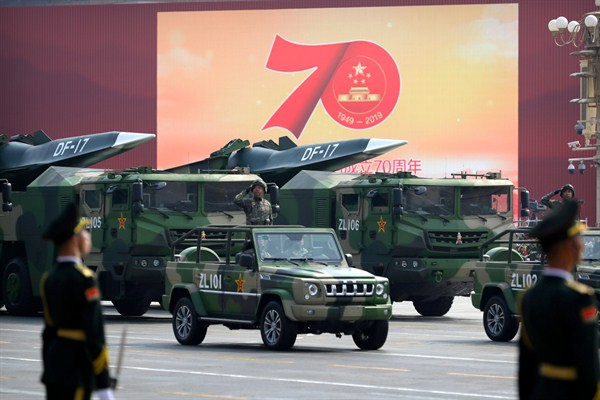The People’s Republic of China marked the 70th anniversary of its founding Oct. 1 with an extravagant celebration in Beijing’s Tiananmen Square. The military parade that headlined the event served as a reminder to domestic and foreign audiences of the ruling Communist Party’s durable grasp on power, while also providing yet another opportunity for China to flaunt the rapid and remarkable growth of its military capabilities.
Chinese military parades are intended to demonstrate China’s military prowess and technological advances under the Communist Party. While this message is intended primarily for domestic consumption, over the past decade China has increasingly used the parades to signal its growing capabilities to regional rivals and adversaries. In 2009, for instance, the parade marking the 60th anniversary of Communist rule was used to display what were then the early fruits of China’s military modernization. In 2015, China held a unique one-off military parade to mark the country’s victory over Japan in World War II. Held at a time of growing tension due to China’s construction of new islands in the South China Sea, that parade was used to prominently reveal the DF-26 intermediate-range ballistic missile, reportedly capable of targeting American aircraft carriers at sea.
As with these earlier parades, the discipline and administrative efficiency of the Chinese military and bureaucracy were on display last week. But while this year’s parade shared the pomp and ceremony of earlier iterations, it revealed vast improvements in the capabilities of both the Chinese military and the Chinese defense industry.

